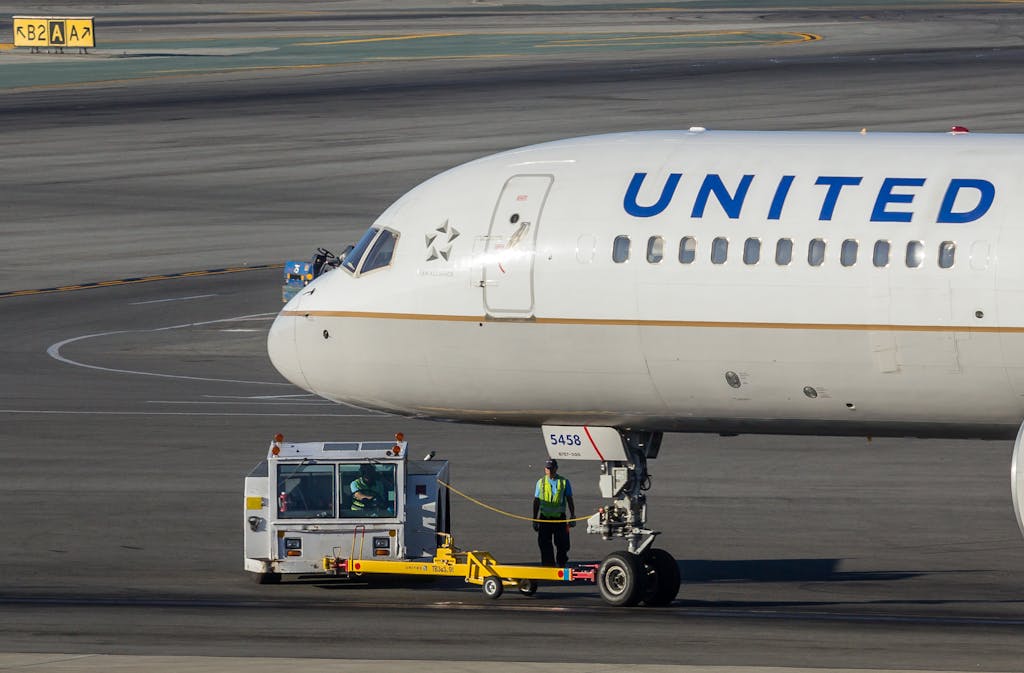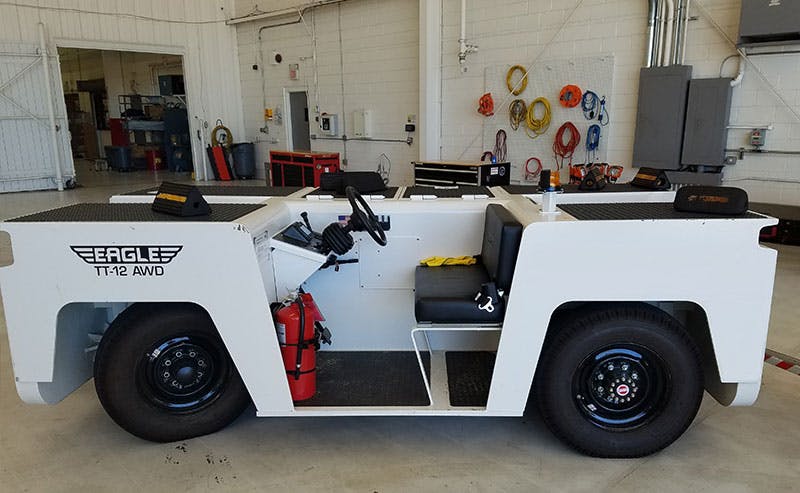As you are likely aware, every piece of ground support equipment is important for the smooth operation of an airport. But there are potentially no pieces of equipment that are more important than the aircraft tug. Without working tugs, airports would literally be at a standstill. Properly maintaining your tugs is vital to your ground support operations. The four key maintenance categories for tugs are towbar checks, fluid and engine checks, wheel and brake checks, and operating system checks.
Towbar Tug-Specific Maintenance

Tugs that rely on towbars should regularly have their towbars inspected and maintained. If the towbar you need for a specific aircraft is damaged, the rest of the tug is not going to be much help. During these inspections, our technicians check for missing, loose, or broken pins and bolts. If any of these are found, we are able to replace them on-site. Next, we check the towbar for bends, dents, and scratches. Bends and dents can compromise the strength of the bar while scratches in the paint can allow rust to begin forming. Finally, we check that the towbar is secure when attached to both the tug and aircraft. A loose connection could come undone during the towing process.
Fluid and Engine Checks

Fluid level checks are among the most common and basic maintenance tasks performed on tugs or any other ground support equipment. The five major fluids that need to be checked are engine oil, transmission fluid, brake fluid, power steering fluid, and coolant fluid. While checking fluid levels, we also test the viscosity, wear, and contamination of the fluids. Over time, these fluids will break down and become less effective at their respective jobs. During this time, hoses and tanks are checked for leaks, and filters are checked and replaced if necessary.
With the fluid checks complete, it is then time to check the engine. This involves doing a test startup and allowing it to run for a short period of time to make sure everything works properly. Engine issues are always a bad sign, but it is better to catch them during one of these tests than for the engine to fail while the tug is in use.
Wheel and Brake Checks

The wheels and brakes of your aircraft tugs are far more important than you probably realize. For wheels, ensuring that the tires are properly inflated and that the wheels are undamaged is vital for the proper operation of the tug. When using a towbar tug, the grip of the tires on the pavement is what gives the tug the traction it needs to move heavy aircraft. If the tire pressures are not correct, the tug may not have the traction it needs, or the tire may suffer from higher levels of wear. Towbarless tugs gain their traction from the weight of the aircraft they are carrying. However, this also means that the tug’s wheels need to be able to support a portion of the aircraft’s weight. Any damage to the wheels can compromise this function of the tug and make it inoperable.
Just as the wheels on your tugs are needed to move the weight of the tugs and planes, the brakes need to be able to stop that movement. The heavier the tug and aircraft, the more momentum that needs to be stopped and therefore the more strain that is put on the brakes. Not much is worse than a tug that is towing an expensive aircraft being unable to stop when it needs to. Regular brake maintenance includes checking the wear of the brake pads and checking the brake discs for cracks and other signs of impending failure. If any issues are spotted, the brakes should be replaced.
Ensuring the System is Operational
The final part of tug maintenance involves checking that the operating system of the machinery is working properly. Gauges, such as the fuel gauge, are tested for accuracy as part of this system check. Next, all of the safety features are tested. This includes headlights, warning lights, horns, backup sounds, etc. And finally, the cab climate controls are tested for enclosed, manned tugs. Windshield wipers, heaters, air conditioners or fans, and any other parts of the system that help the operator function in various climates are included here.
Conclusion
There is a lot that goes into properly maintaining aircraft tugs. For towbar tugs, the towbar will need to be inspected for missing or broken bolts as well as damage to the bar itself. Manned tugs of every variety will need their fluids and engine, wheels and brakes, and operating systems checked as well. Ensuring that the fluid flowing through the system is clean is important for preventing costly engine damage. The wheels and brakes must be in good condition in order to move and stop the heavy tug and aircraft. And the operating system is necessary for combatting the climate and maintaining a safe work environment.
FlyTek GSE
Are your aircraft tugs or other ground support equipment in need of maintenance or repairs? At FlyTek GSE, our technicians have extensive experience with many of the major brands, including Eagle Tugs, TowFLEXX, FoxCart, and more. Contact us today to learn more about how a preventative maintenance regimen can keep your equipment operating at peak capacity for longer.

